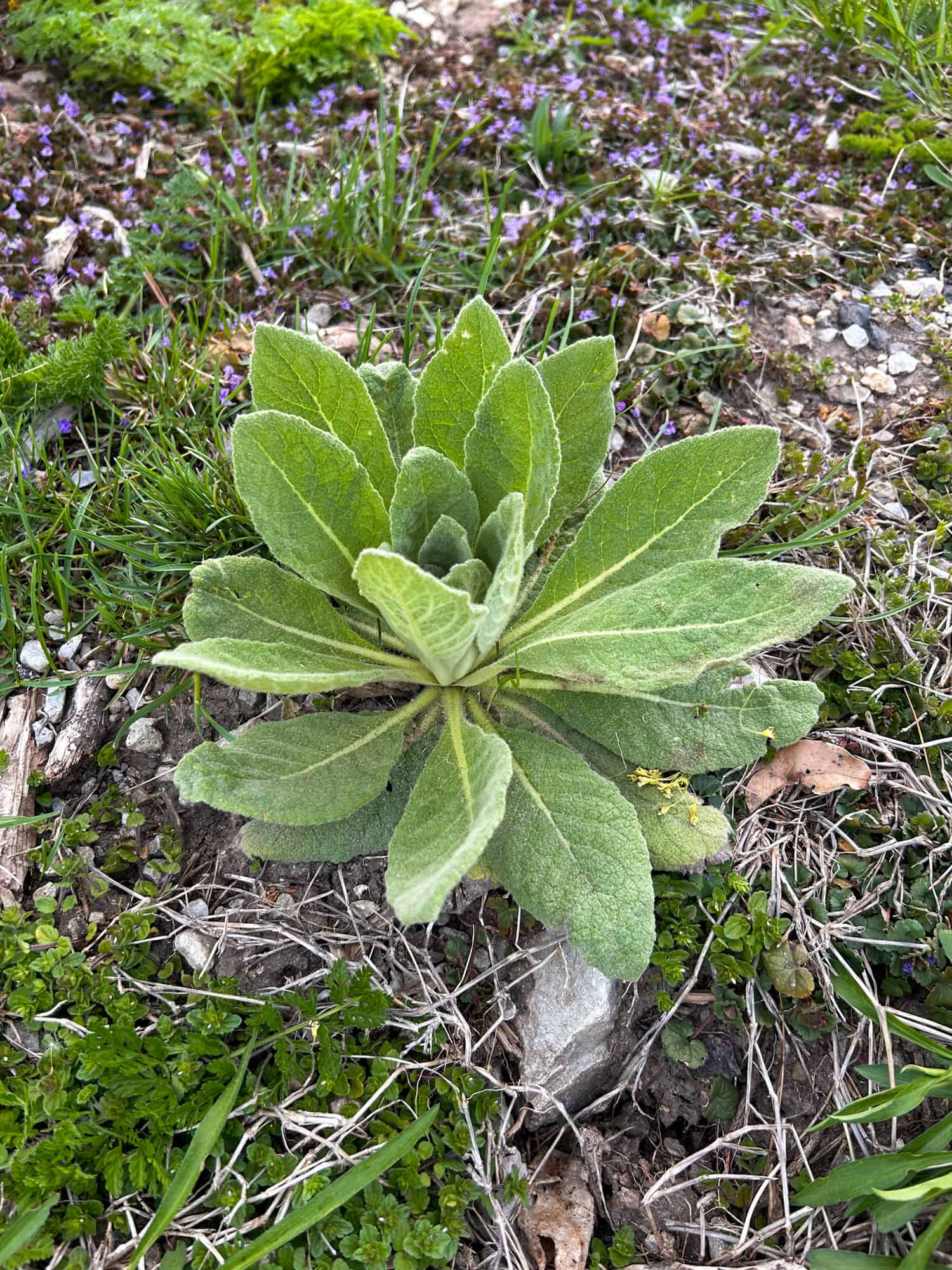Spring foraging is a great way to get the whole family outside after a long winter. There are so many flowers, plants, and mushrooms that can be foraged in the spring, but it is important for the health and safety of your family and the land that you know how to do it properly. Today, Illinois photographer and mom of three, Meghan Garriott, is here sharing tips for wild foraging with kids for springtime plants, flowers, and mushrooms. She’s got tips on how to identify what you find and foraging etiquette.
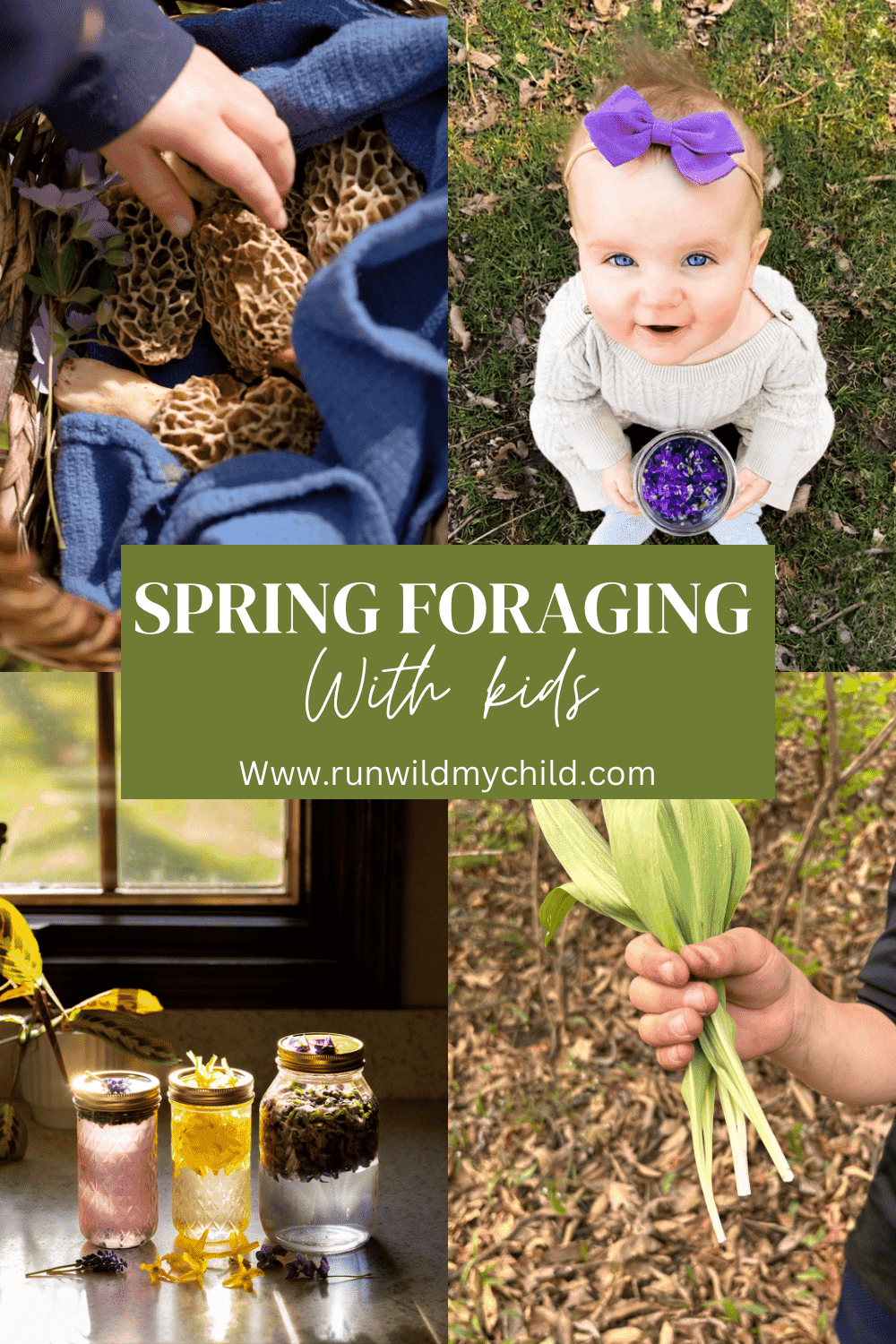
What is foraging?
Foraging is the act of searching for, identifying, and collecting wild food and resources. Before the days of modern agriculture, humans relied on foraging from the land they lived. Many cultures forage not only to feed their family, but they also used these wild plants and mushrooms for medicines and hygiene. Contrary to popular belief, just because a plant is not commercially grown or mass-produced, does not mean it’s not healthy! There are so many things around you (possibly in your own backyard) you probably never realized are not only edible but are also healthy and delicious!
Importance of foraging with kids
Kids love a good scavenger hunt. Foraging is like a scavenger hunt where you can eat your prizes for dinner or dessert once you’re done. It is fun and productive. When you are out in the forest foraging, this is a perfect time to pass down traditions and culture about foraging. Explain to your children what you are gathering, and weave in storytelling elements while you gather. My grandmother loves to tell me about her childhood foraging for violets and making violet jelly.
Being outside and taking from nature is a great time to teach kids about respecting nature and how we can try to live more sustainably. A foraging haul can provide a nutritious meal or snack, but be sure to harvest mature plants, only to take what you need and leave some for others. When gathering food with your own hands, you tend to appreciate what you’re eating and waste less. These are all good lessons for children to learn. Additionally, the act of foraging keeps little bodies active, promotes better eyesight, and improves self-confidence.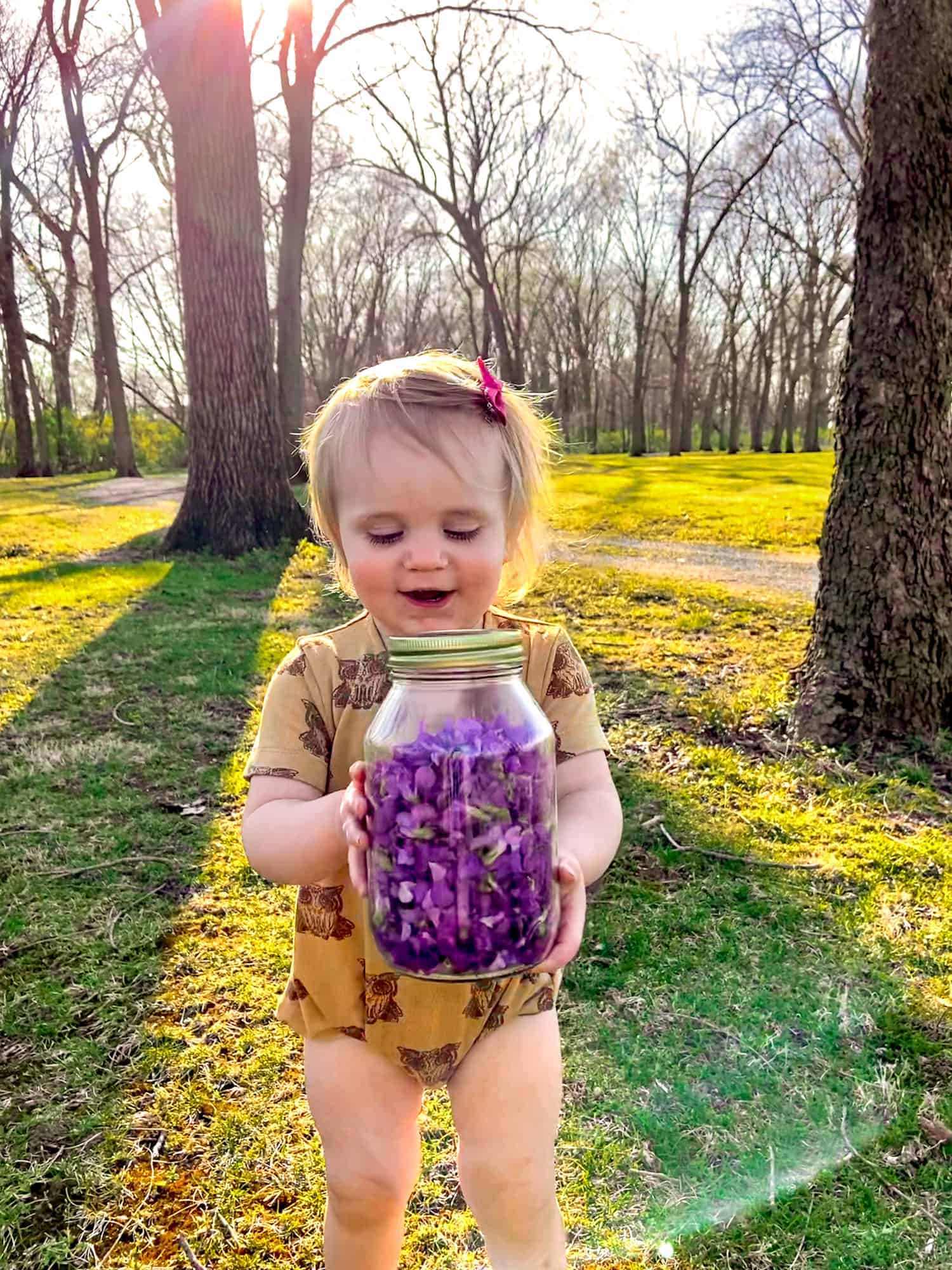
Foraging rules and regulations
Before heading out to forage, make sure you know the laws or restrictions on foraging in your area. Different plants have different rules, as well as different areas. These laws dictate not only what you can take, but how to harvest it. As a general rule, foraging is not allowed in nature preserves or conservation areas. Public or state land may allow you to forage, but only native species. If you are foraging on private land, you should always have the land owners permission. Do your research and know the rules before you go.
Sustainable foraging
There are some plants like ramps/wild leeks that have recently become very popular, so to ensure future growth, forgers are instructed to cut from the base and not to take the bulb. It is best practice when foraging to only take 1/4 of what you see. This ensures that there are enough wild plants and flowers left for other species, and enough to regrow or spore for next year.
Identification when foraging
Being able to correctly identify what you are foraging is incredibly important, even more so when forging with kids. You should always have multiple identifiers before picking or eating anything you find outside. Identifiers for plants and flowers are things like color, leaf shape, petal shape, and number of petals. For mushrooms, some identifiers are color, presence of gills, and shape of the cap and stem. Remind your children that they should never touch, eat, or pick anything that has not been properly identified by an adult (one that knows what they’re doing) first.
If you are unsure if you have the right item, do not pick it. Using tools like Google Lens and nature-identifying apps can be helpful, but should not relied upon solely.
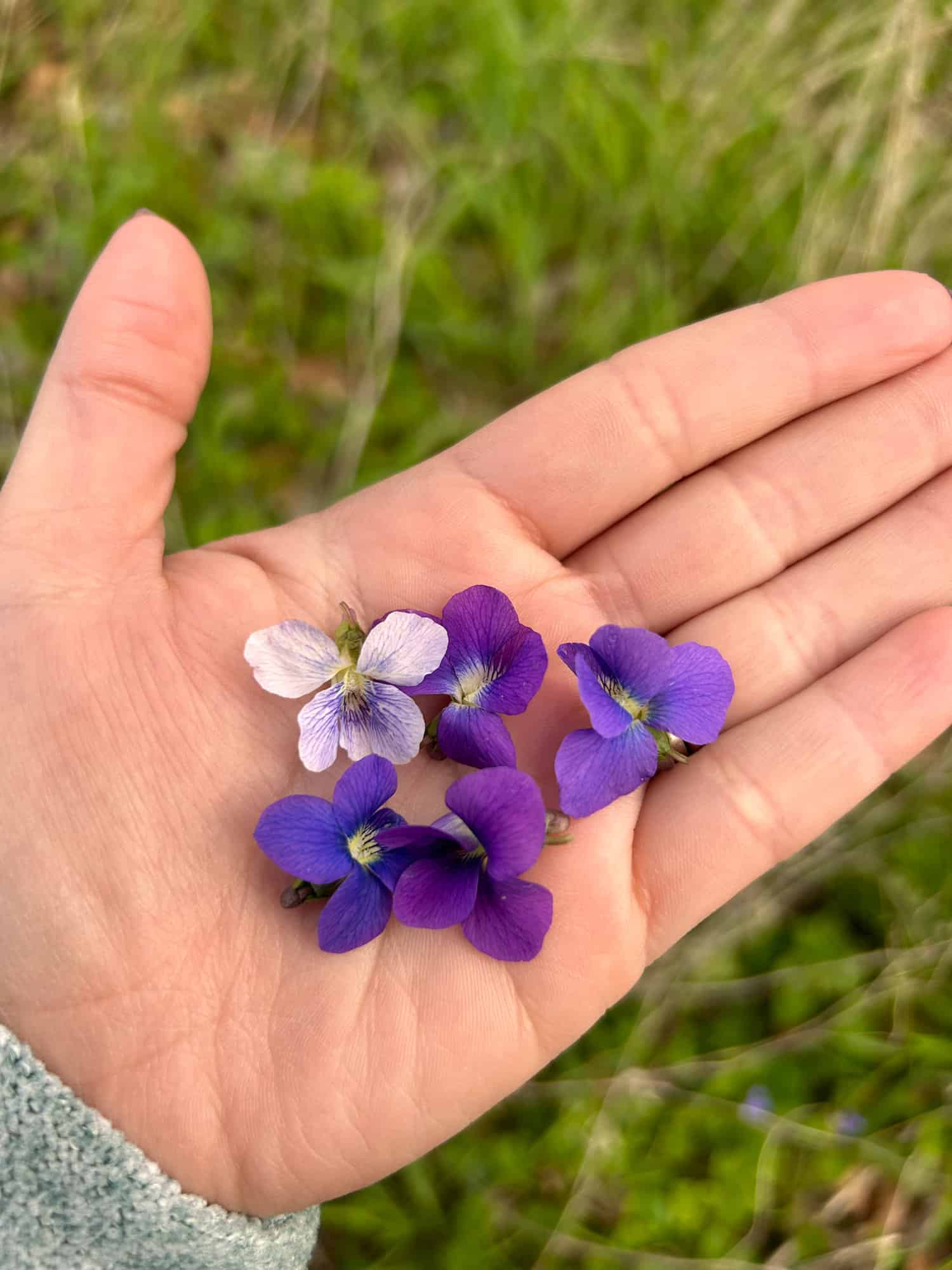
Special considerations when foraging with kids
Precautions should always be taken when out in nature, but special precautions should be taken when children are helping. If you are not familiar with the area you are foraging, make sure an adult checks the area for animal or insect nests and poisonous foliage first. Educate kids about using multiple identifiers before picking. When you’re done foraging, make sure to double-check your haul to make sure extras aren’t brought home, like bugs, spiderwebs, or unwanted plants. Be sure to remind kids that when out in nature, we should always respect the other species and their habitats, and try not to take more than needed.
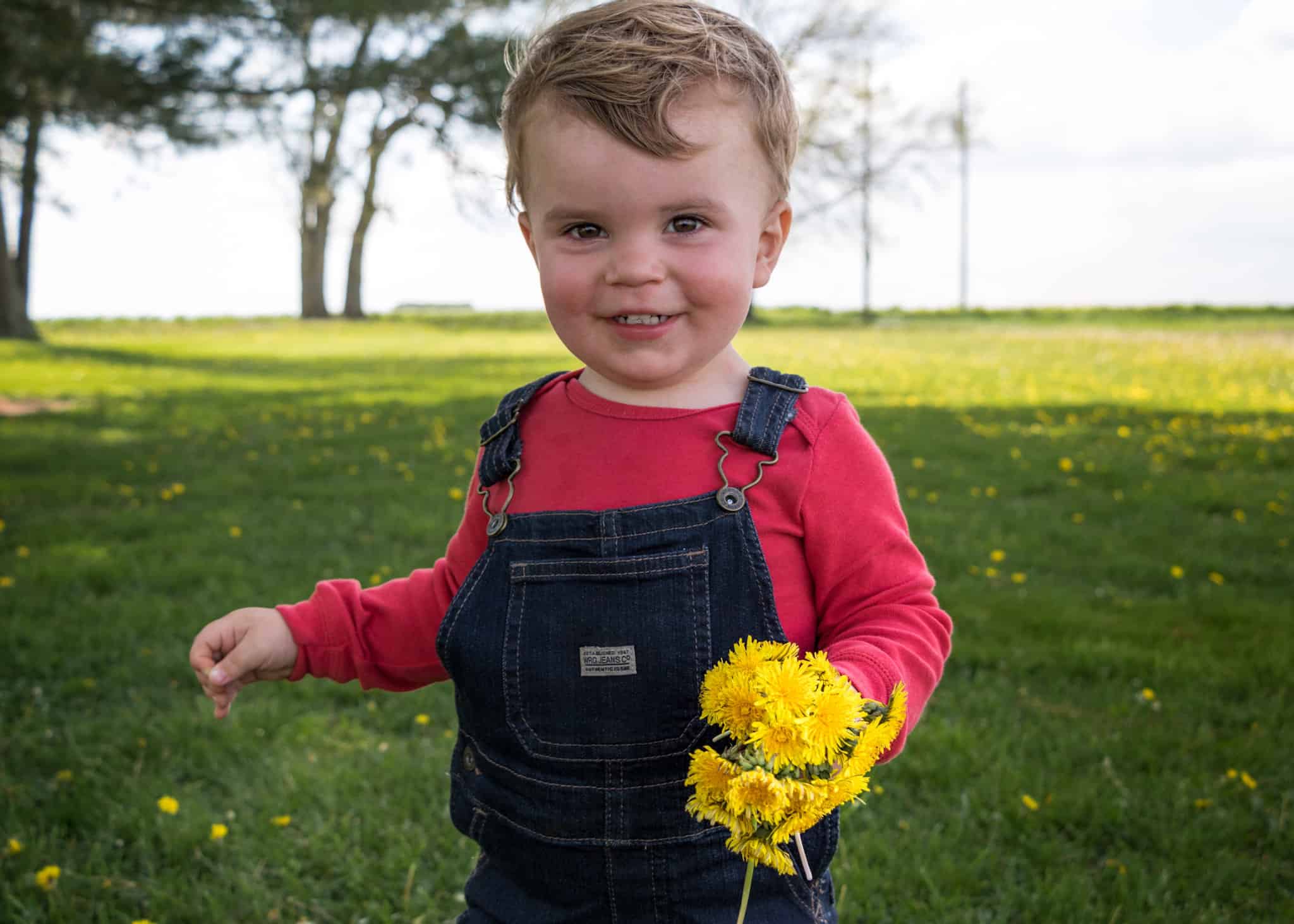
Spring flowers to forage with kids
Flowers are one of the best and easiest things to start foraging for when you are just getting started. Because of their multiple identifiers, colors, and beauty they are easy to spot and correctly identify. Spring is a great time to forage flowers.
Dandelions
Dandelions are probably one of the most well-known landscaping weeds. People work very hard to get these out of their yards. But did you know the entire plant is edible? The roots, the stem, the leaves, and the flowers all have amazing benefits health benefits! And, because of their bright color, these are one of the easiest flowers for a little hands to find and to pick. Because there is an abundance of dandelions around, there’s also an abundance of things you can do with them.
Here are my top 3 things you should do with dandelions:
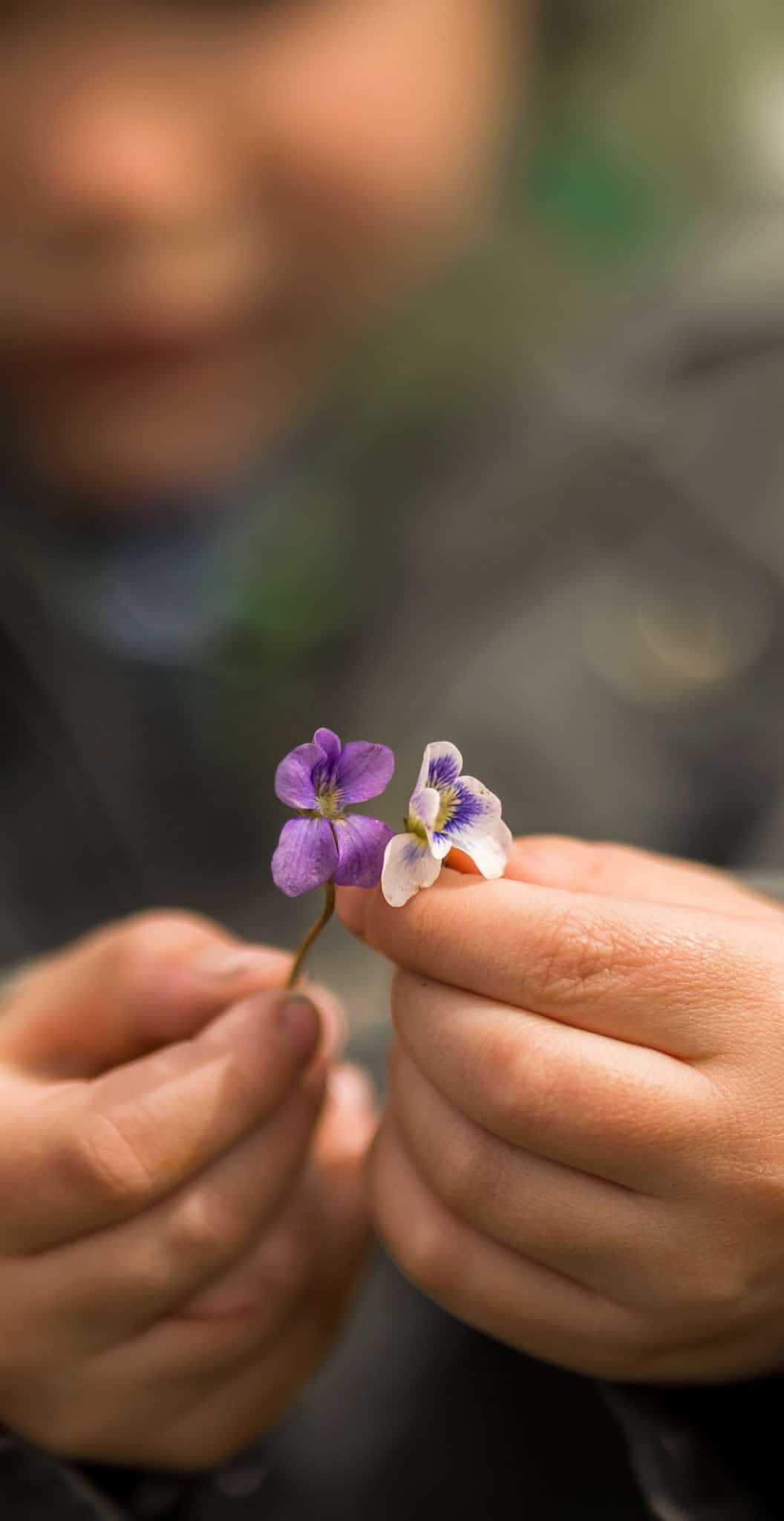
Violets
Violets are another flower commonly found in the early spring. In addition to growing in people’s yards, they also grow in forests and along river banks. Although they can come in many variations of purple, their color makes them easy to spot against the contrasting green grass and leaves.
Similar to dandelions, the flowers and the leaves of violets are edible. Violet flowers can be used to make jellies, simple, syrups, and candies. Here is an article dedicated to foraging violets with kids and using them to make a simple syrup that will change colors!
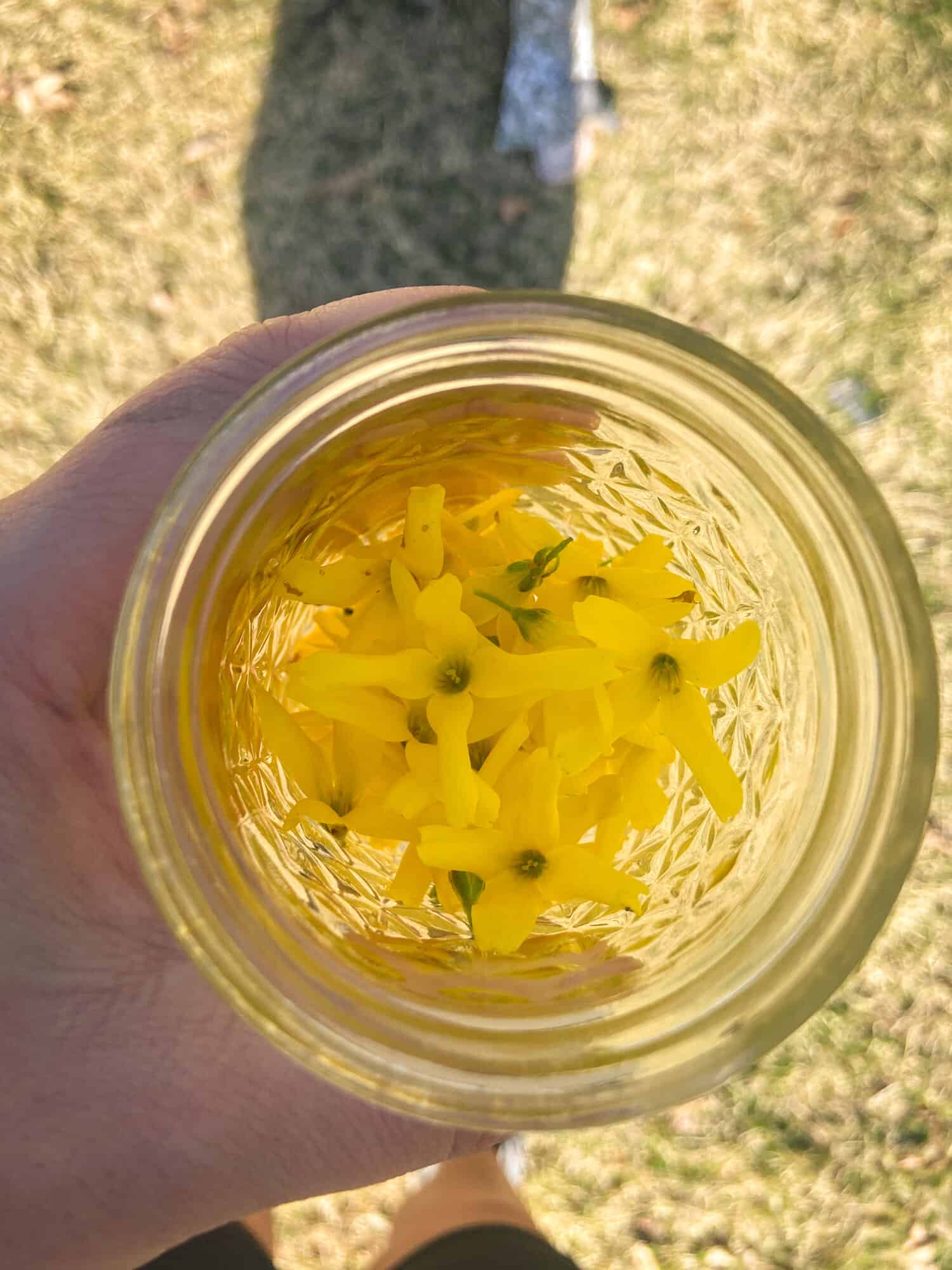
Forsythia
Forsythia is a flowering plant in the olive family. In the spring, its branches are full of bright yellow flowers. This bright shrub is usually found in gardens and landscaping, but can be found in parks, as well.
Because the flowers are large and close together, it doesn’t take long to fill up a jar of them. The bright yellow flowers not only taste good but are used for medicinal purposes in traditional Chinese medicine. We have used these golden flowers to make Forsythia Honey. Forsythia can also be used to make soaps, lotion, and toners.
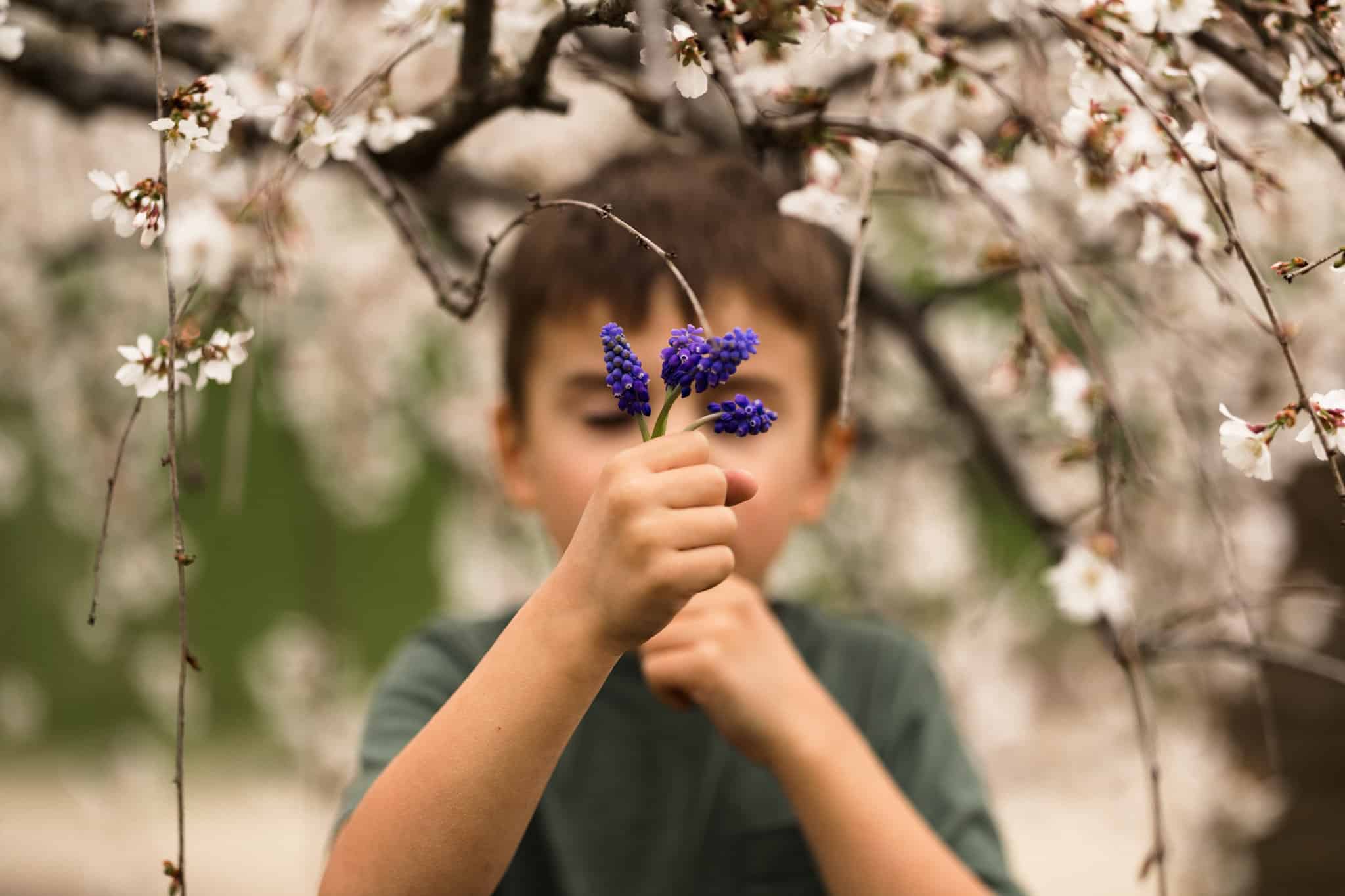
Muscari/ Grape hyacinth
Muscari/Grape Hyacinth
Grape Hyacinths are actually not Hyacinths at all. Thank goodness because true hyacinths are not at all edible! Muscari are extremely invasive, so you can take as many flowers as you want; just try to leave a few for the bees. People often plant just a few and end up with them invading and overtaking their entire yard.
Grape hyacinth blossoms are used as a flavoring in Europe. You can use the little blossoms to make simple syrups to add a little flavor to teas and lemonades. Like violets, grape hyacinths are pH sensitive. This means if you add grape hyacinth syrup to a base, it will turn from purple to more blue, and if you add it to an acid, it will turn more pink!
Here is a video showing how to make the Grape Hyacinth Lemonade
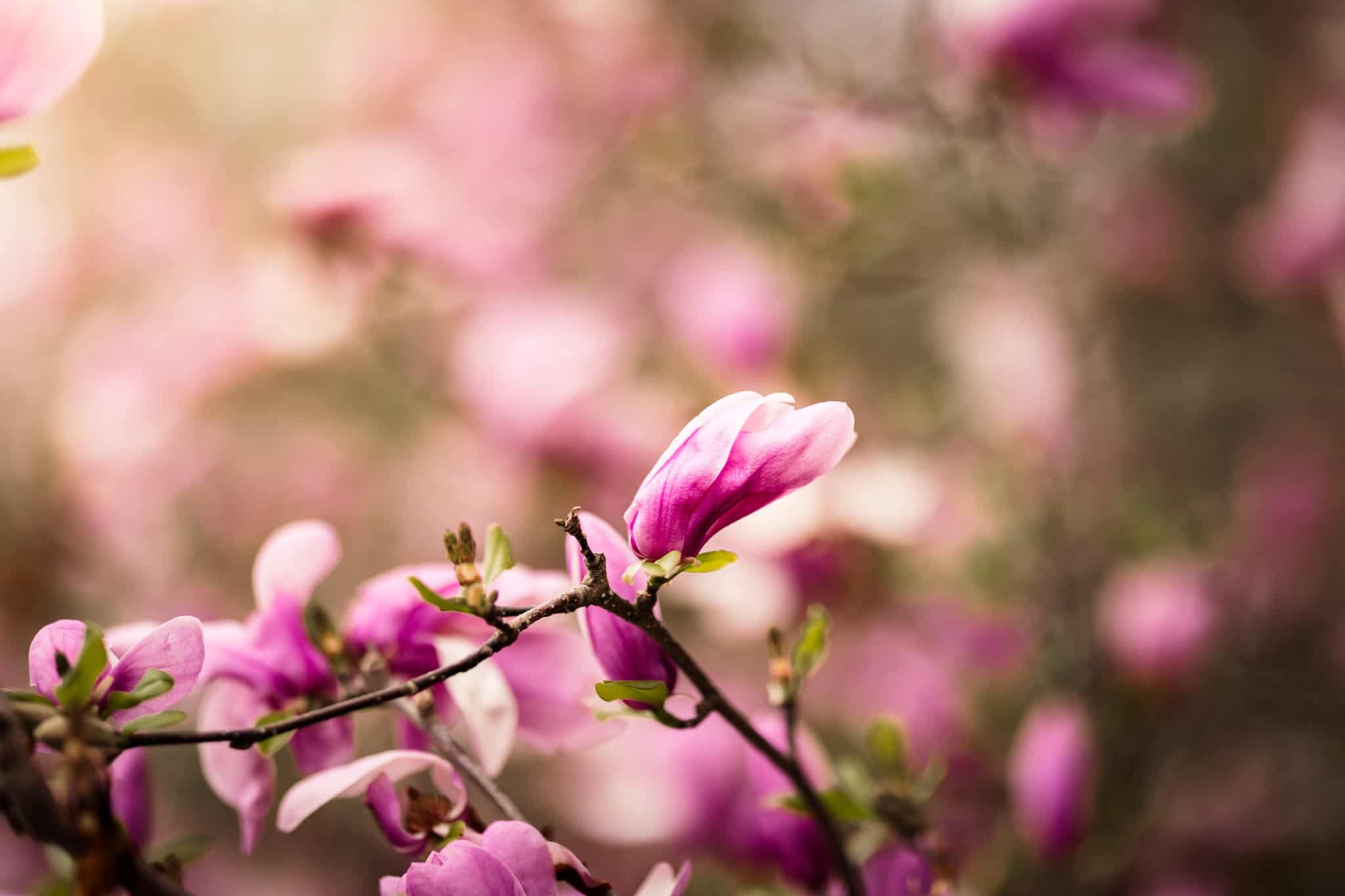
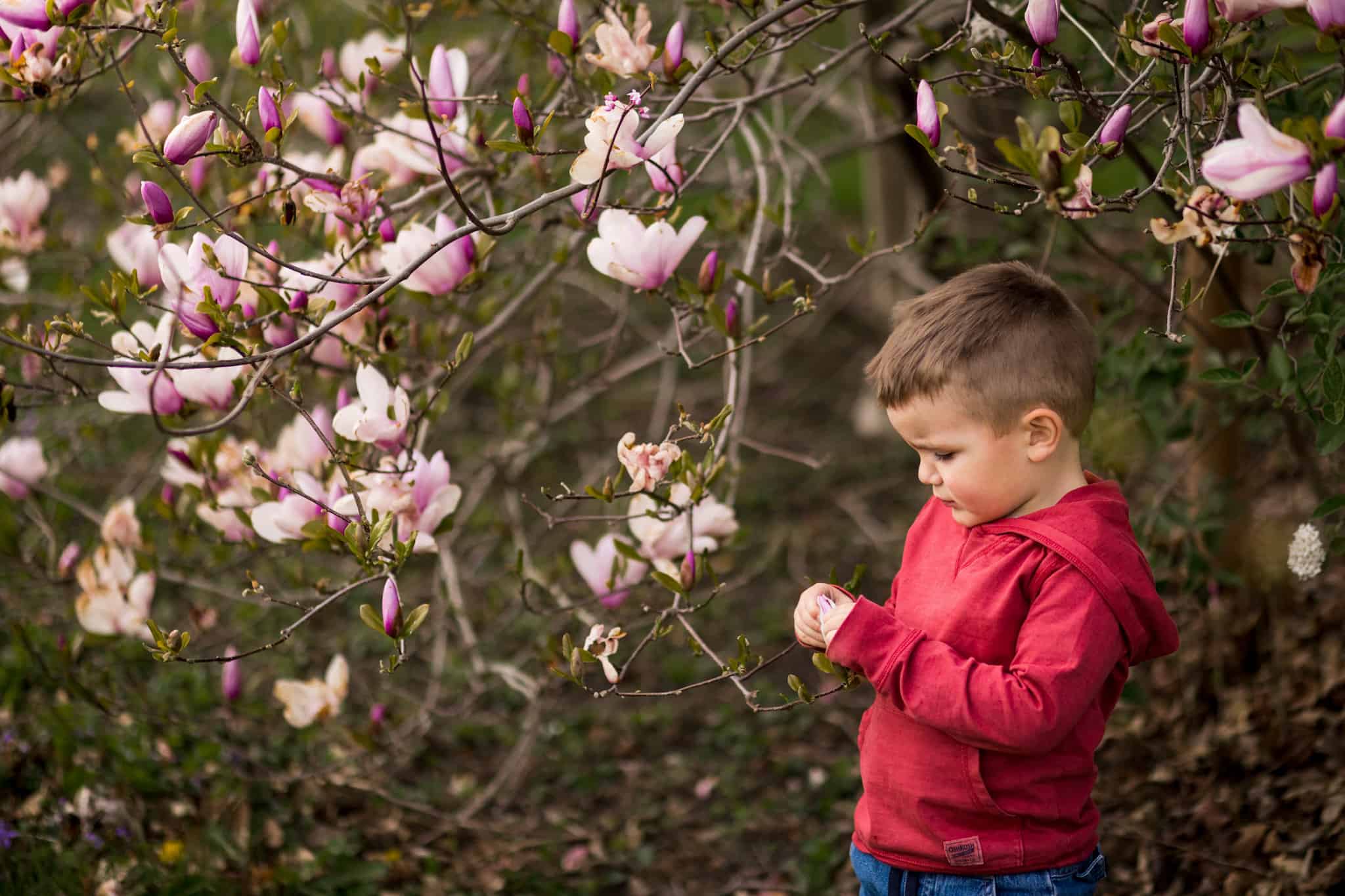
Magnolia blossoms
Magnolia blossoms are such a beautiful site after a long winter. The flowers of the magnolia tree are large, brightly colored blooms and are some of the first blooms of spring. Foraging magnolia blooms might be difficult for smaller kids due to the branches being so up high. The blossoms can be used to make Magnolia snap cookies, and petals can also be pickled for a sweet and tangy treat. My bet is, kids will be more excited about the cookies.
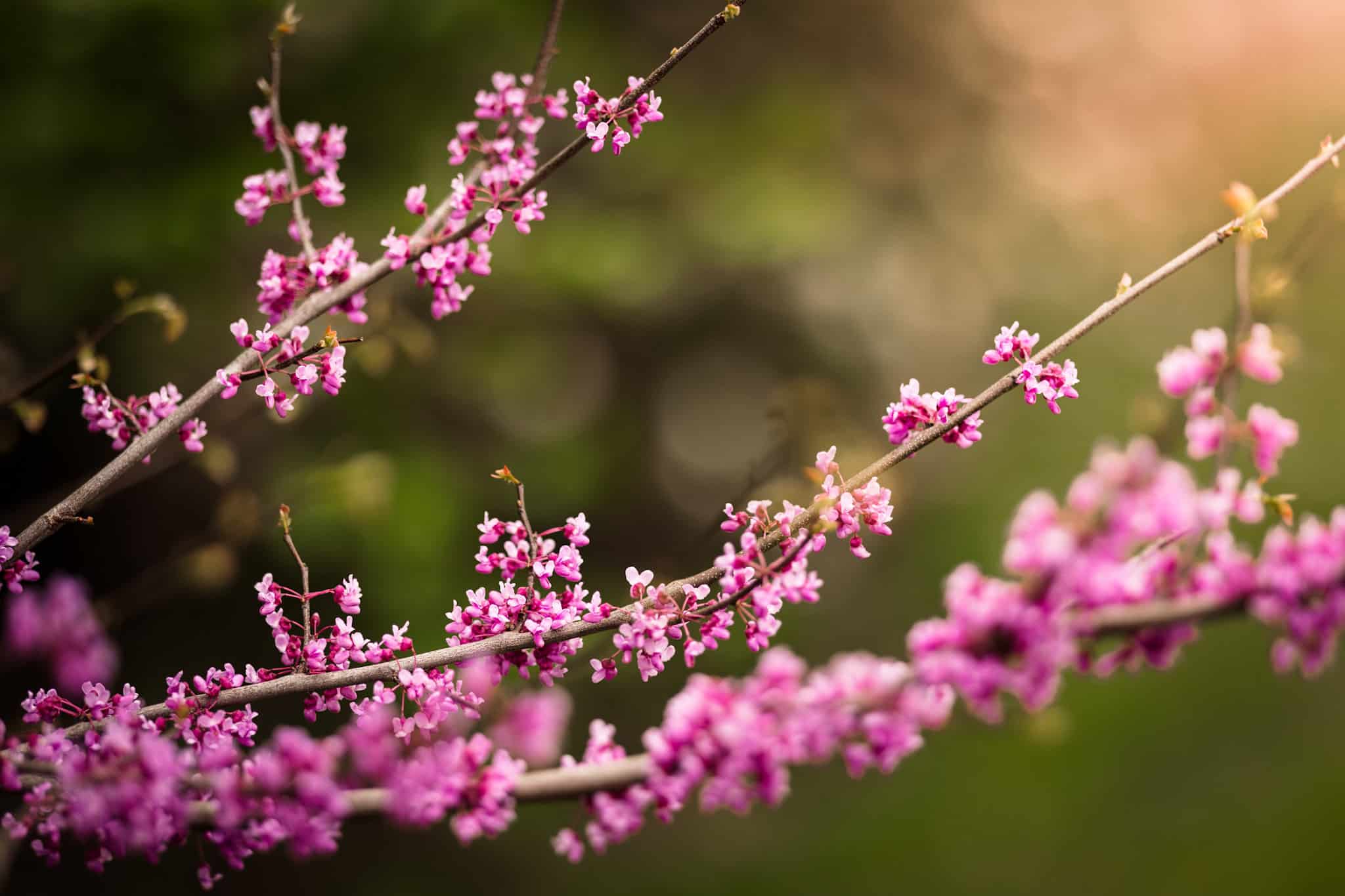
Red bud
Red bud trees are easy to spot, and their buds and blooms are edible! Like magnolias, it may be hard for kids to reach high enough to pick the blossoms to forage, but they can definitely be spotters! Red bird blooms are high in vitamin C, and, like other flowers, can be used to make jellies and syrups! If you want to sprinkle some color on a salad, these can be eaten raw as well.
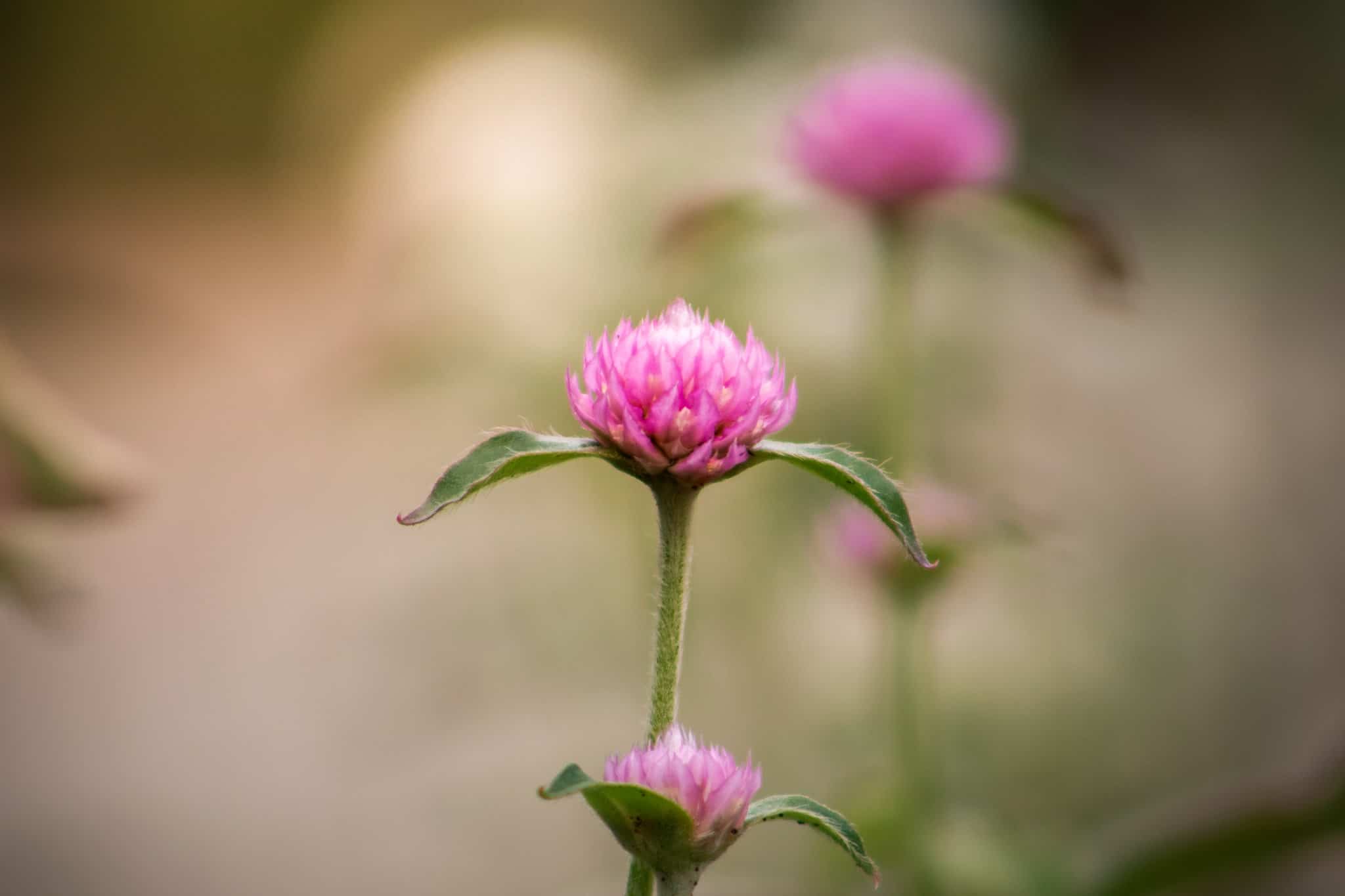
Red Clover
Similar to dandelions and violets, red clovers are commonly found in yards, landscaping, and along roadsides and sidewalks. Red clovers are easy to spot and their flowers usually stick up 6 inches or more from the ground.
The flowers not only smell delicious but are tasty as well. These pretty pink flowers are mostly used for tea. Red clover tea is not recommended for children, as it is traditionally, used to help with women’s health issues, such as menstrual and menopausal symptoms. A more kid-friendly way to use red clover is in these Red Clover biscuits.
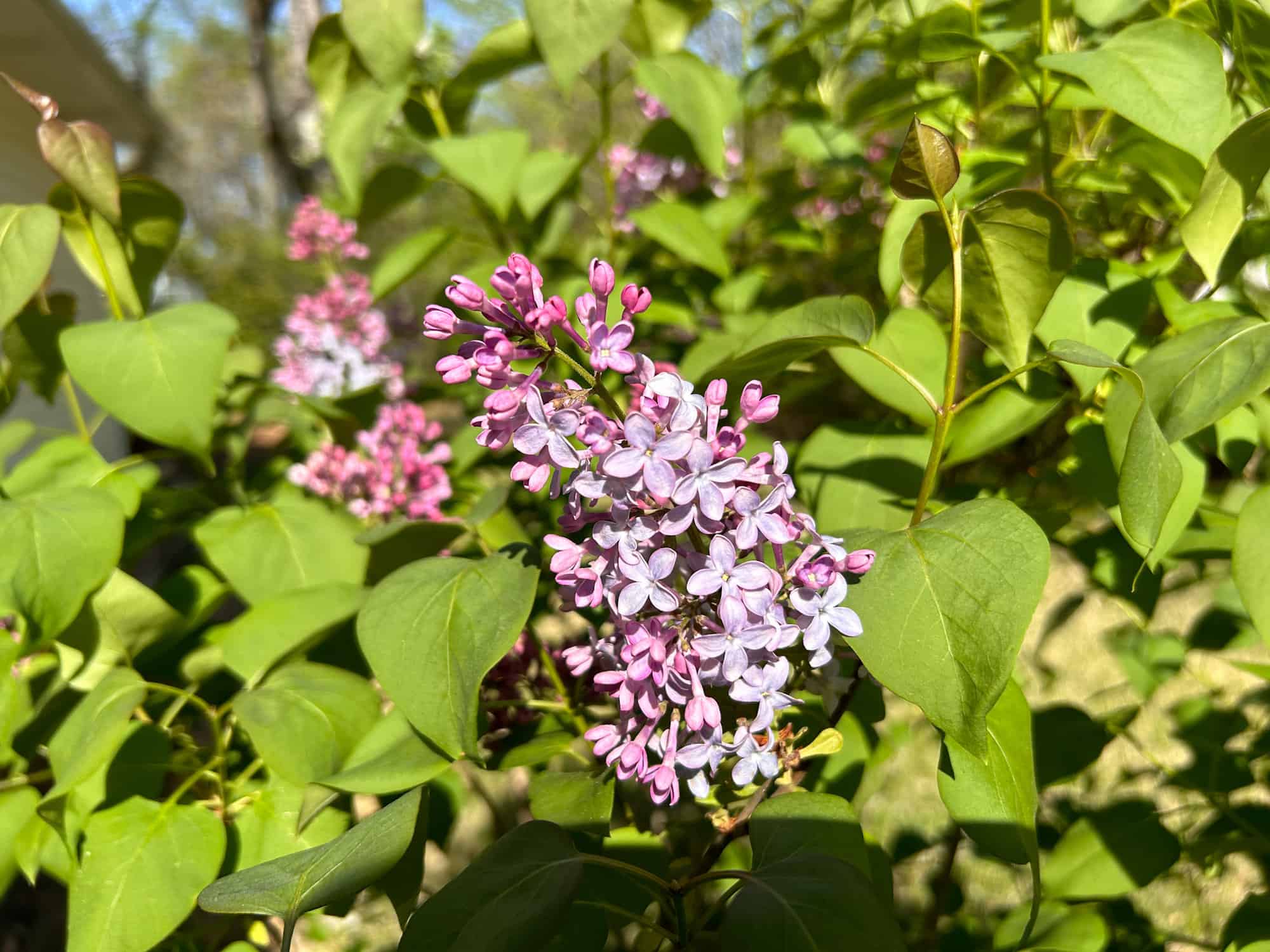
Lilac
Nothing smells better in the spring than fresh lilac in the breeze. Lilac tastes as good as it smells! The flowers can be used to make syrup, flower-infused sugar, and candies. Infuse lilacs in oil to make delicious-smelling soaps and lotions! Here is a video on how to ferment lilac water using the yeast that is naturally on it to make a fizzy lilac drink!
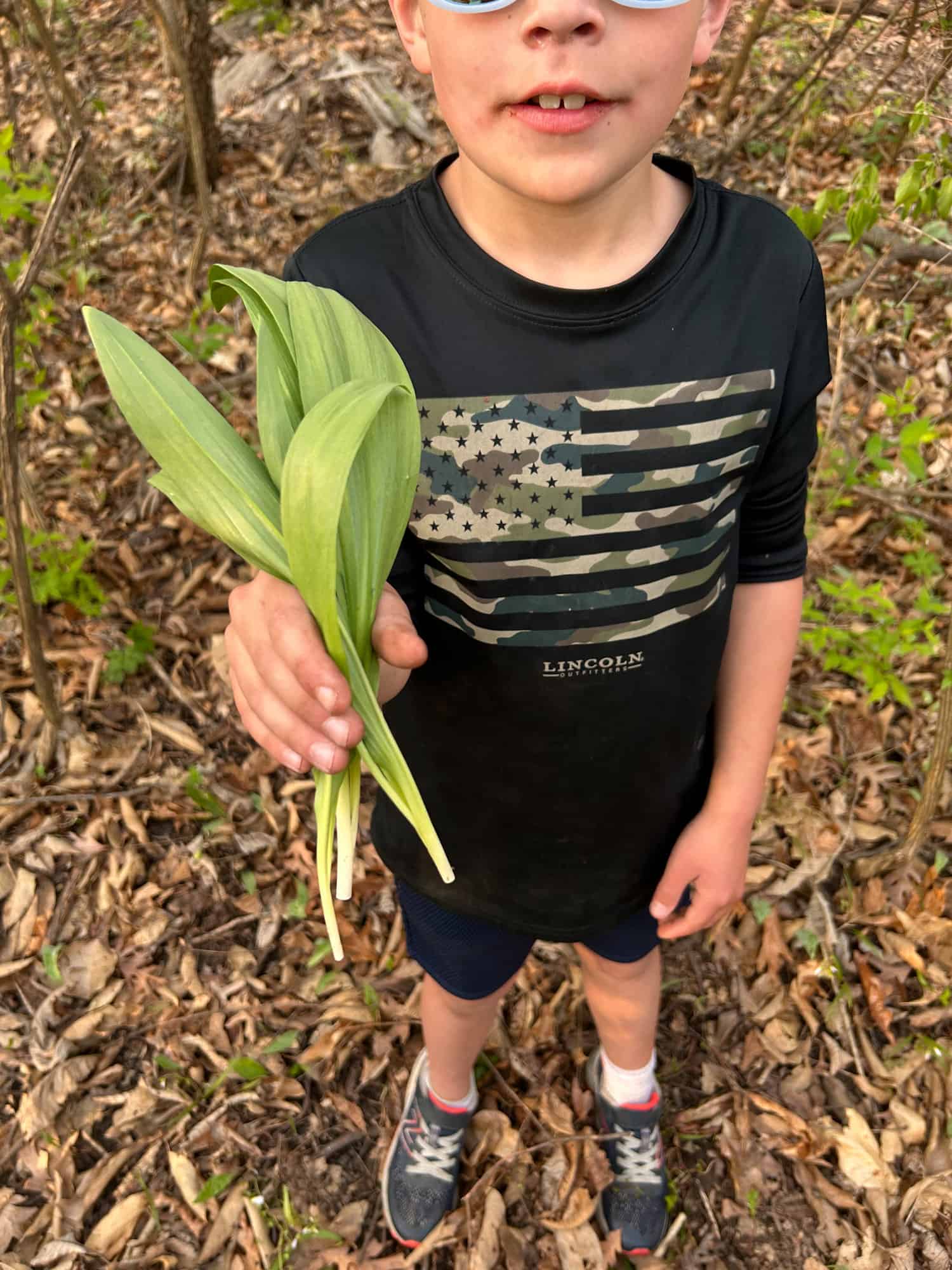 Spring plants to forage with kids
Spring plants to forage with kids
Wild plants are a little harder to for untrained eyes to find than flowers. Luckily, the plants listed below are readily available and probably in your front yard, back yard, or along your local sidewalks! Here are a few of our favorite local plants to forage in the spring.
Ramps/wild leeks
Ramps are a species of wild onion that can be found all over North America. Ramps are among some of the first plants to appear in the forest in the spring. The very strong garlicky smell of ramps can help to identify them properly. Be aware when foraging for ramps that lily-of-the-valley looks very similar, but is NOT edible. Both ramps and lily-of-the-valley can’t have white or red stems. If you are not for sure, do not eat it.
Ramps have recently risen dramatically in popularity over the last few years, and because of this, some places have put restrictions on foraging ramps or instructed foragers to cut ramps instead of pulling out the bulb. Please do your research and be aware of any rules or restrictions when harvesting.
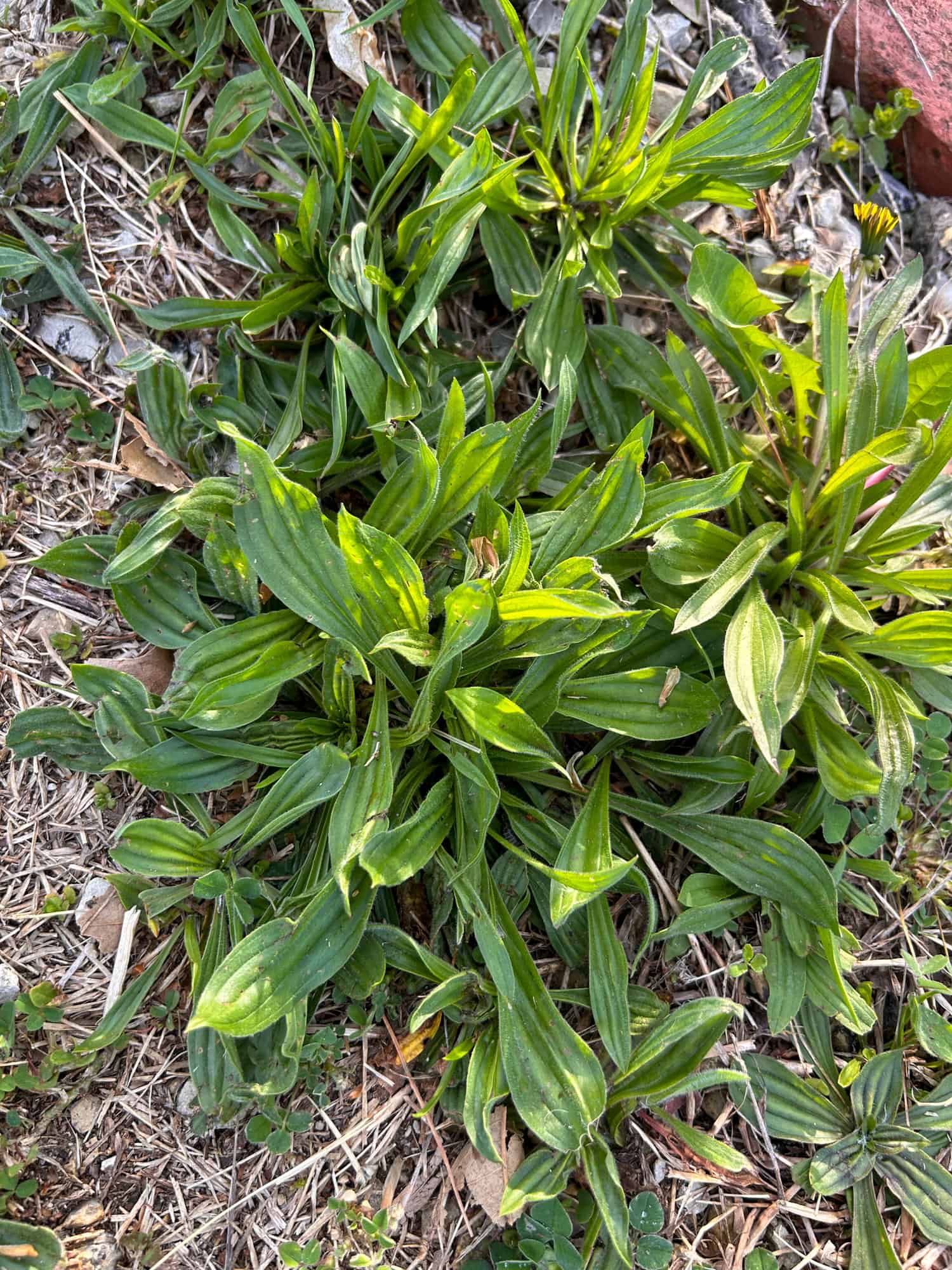
Plantain
You have probably seen this plant in the cracks of sidewalks. Plantains grow all over and have qualities you probably didn’t even know about! Did you know that plantain can be used to help sores, blisters, and insect stings? Indigenous people would chew up the leaves of plantain and use the poultice to soothe insect bites. This could come in handy, especially for kids, who are often stung by bees and bit by mosquitoes while outside playing!
Here you can read about the medicinal benefits of plantain with sources and science to back up the claims!
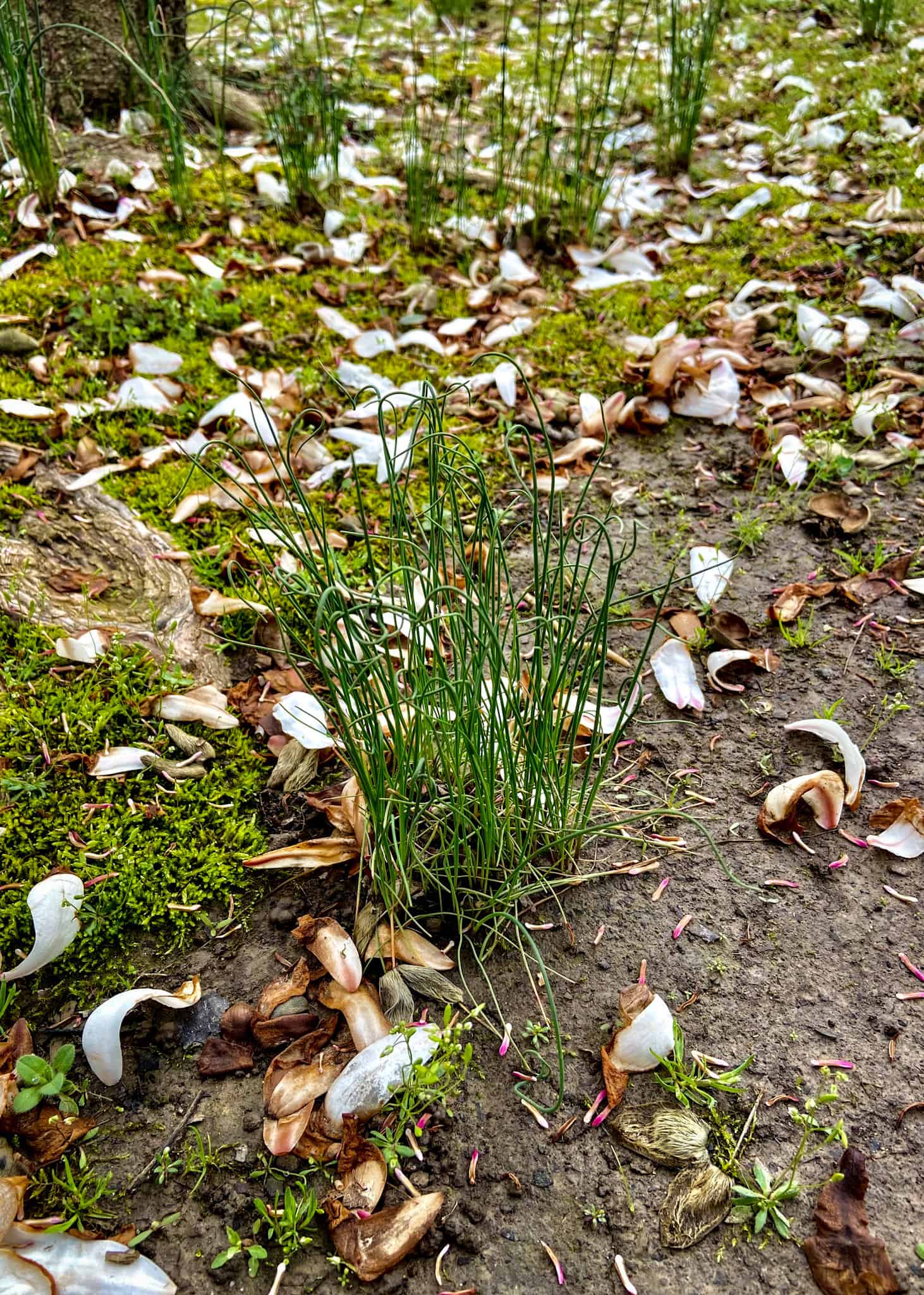
Onion grass/wild onion/wild garlic
If you’ve spent any time outside in the spring, you’ve probably seen wild onion grass. It pops up in the spring, usually before the regular grass, and it grows twice as fast and much taller. You can often find it growing in small patches or clumps.
When identifying, you can pull out the patch, and you will see small white bulbs at the end, just like miniature green onions. The stems/grass part of the plant can be used like chives (fresh or dried), or you can grind up dried stems to make onion powder!
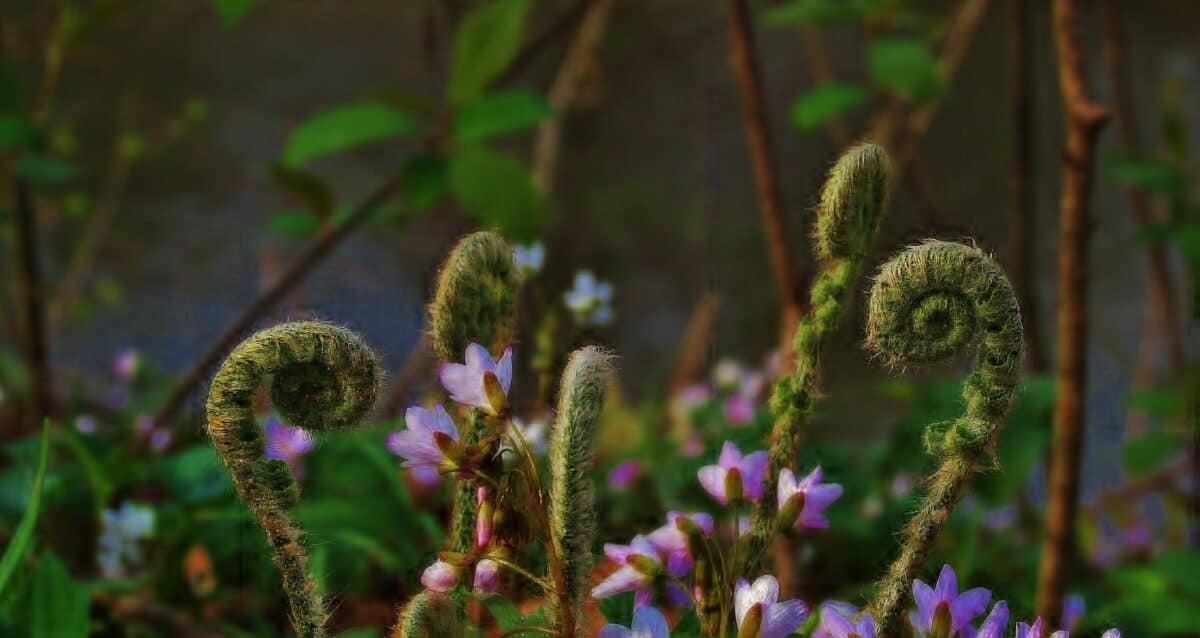
Fiddlehead ferns/ostrich fern
Fiddleheads are the furled fronds of a young fern. Say that 5 times fast! Fiddlehead ferns are edible ferns before they unfurl and become inedible ferns. They are edible when in the furled-up stage of a fern, just after they start to shoot through the ground in spring. As they emerge through the fertile, wet April soil, they grow and unfurl quickly (sometimes lasting just a few days in their furled-up stage) – so you have to act fast! At this unfurled stage, they are tender and edible.
Though all ferns have a fiddlehead stage, it’s the Ostrich fern, a specific edible fern species, that has become synonymous with the words “fiddlehead ferns.” Their taste is often described somewhere between asparagus, broccoli, and spinach. The ostrich fern is pictured here. 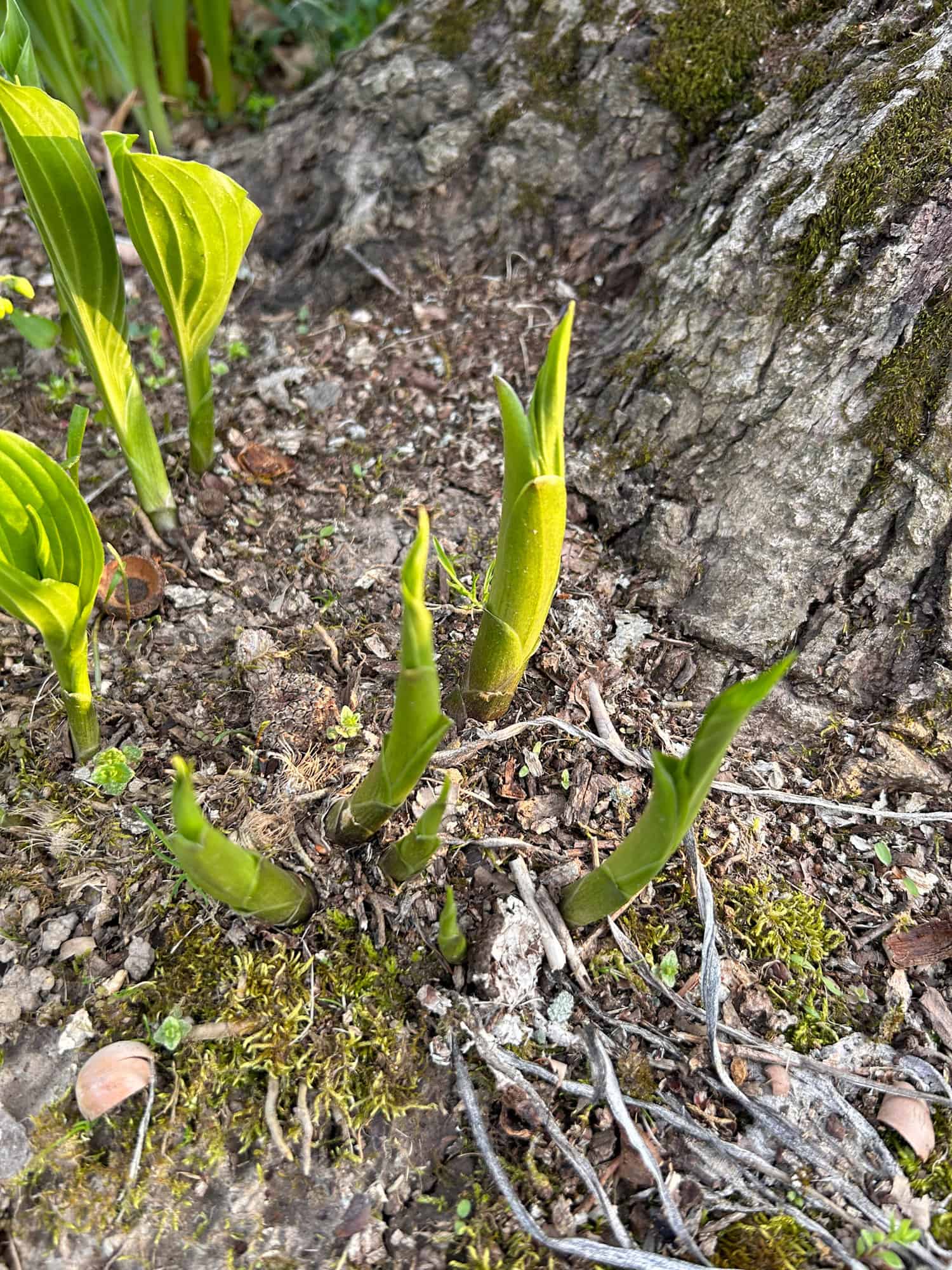
Hosta Shoots
Did you know these shade, loving ornamental plants were also edible? Hostas usually spread/multiply quickly over the years. So instead of getting rid of them to keep from overcrowding, you can dig up, young shoots and eat them!
Most people prepare them like you would asparagus, with a similar taste and texture. All species of hosta are edible, but they are best eaten right when they shoot up. Here is a recipe for Bacon Wrapped Hosta Shoots.
Mullein
Mullein is probably most recognizable when it is large, tall, and its yellow stalk is flowering along roadsides and sidewalks. Foraging mullein is best done in the spring when the leaves are young and tender. These fuzzy leaves are fun and easy for kids to identify. Mullein is most known for its respiratory benefits. Smoking Mullen is probably not the best way to utilize it with kids, but mullein tea is also raved about for its respiratory healing properties.
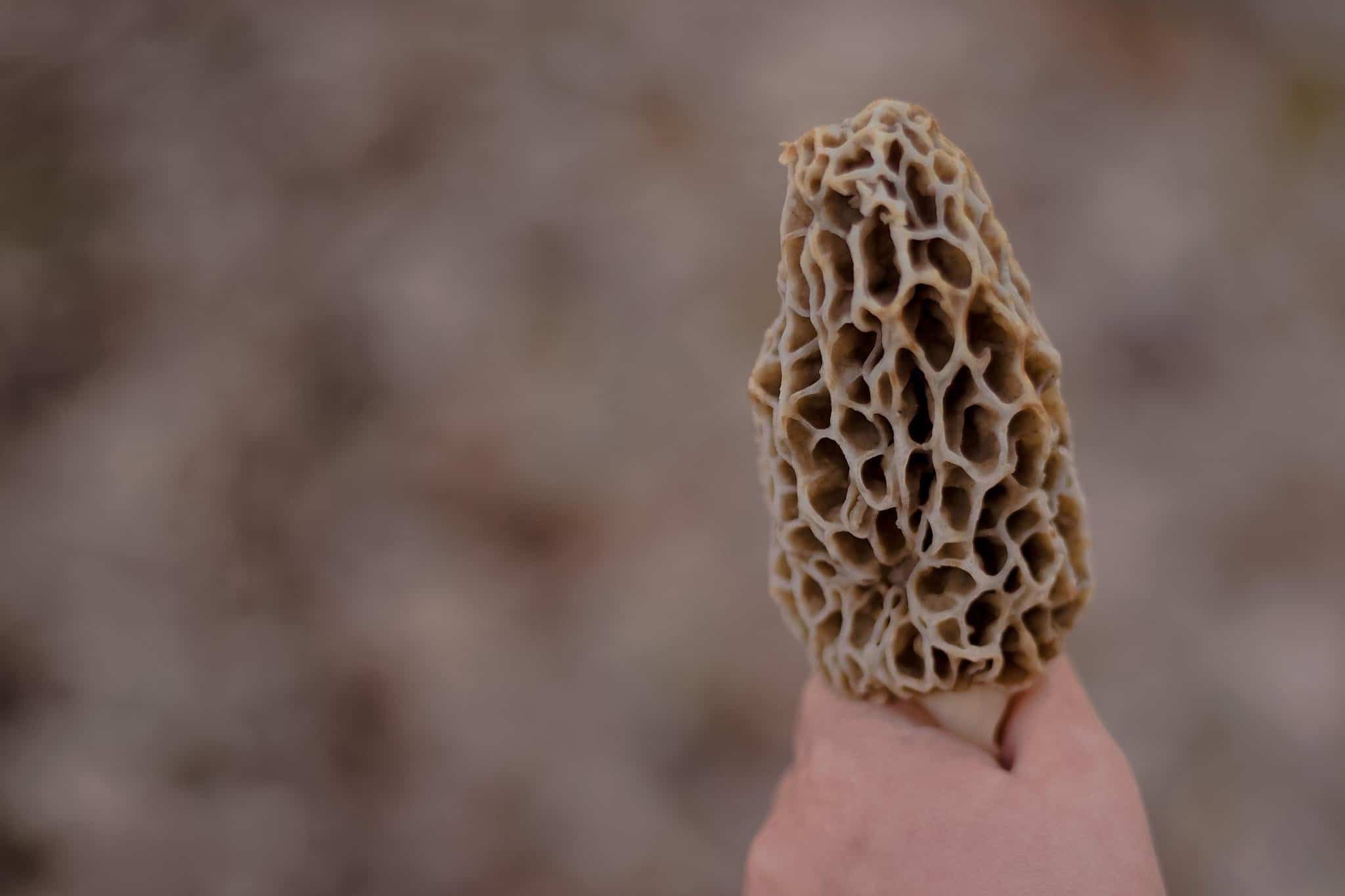
Morel mushroom picture by @c_l_allofus
Foraging spring mushrooms
There are thousands of mushrooms/fungi to find out in the woods or even just in the backyard. It’s important to know that while a lot of mushrooms are edible, there are a lot that are not. Some mushrooms are very dangerous and even deadly if ingested.
Morels
Morel mushrooms are a great way to start foraging mushrooms because they are easier than most to identify! Not to mention, they’re delicious! You can find morels under or around fallen and decaying trees, and along south-facing slopes. Morels have deeply ridged camps that resemble honeycombs. The stem of the morel is hollow. These mushrooms are delicious when sautéed or when fried!
Family time foraging
You don’t have to venture far to begin your foraging adventures. Nearly everything listed here was found on or around my own property without too much searching. Even if you don’t plan to eat the things you find, looking for these spring treasures is still a fun and educational scavenger hunt! How much can you forage in your backyard this spring!?!
What do you forage in the spring?
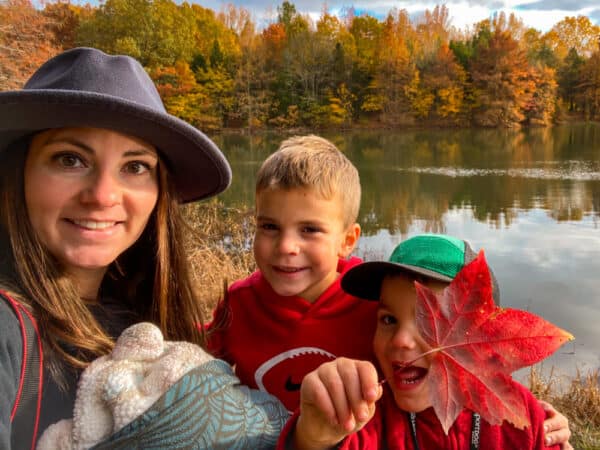
About the author
Meghan is a midwestern mom of 3 kids and one dog. She is a physical therapist assistant and family photographer. At home, her and her family enjoy gardening (both indoors and outside), riding ATVs, and exploring the river behind their house. When not at home, they can usually be found at the lake or exploring Illinois state parks. Meghan’s family has always loved the outdoors, but they really found a passion for being outside and photography when her oldest son had to undergo a bone marrow transplant as a baby. During her son’s recovery, being outside became a safe place for the whole family to learn, grow and thrive.
You can find more from Meghan online in the following locations:
Instagram: @meghangarriott
Meghan’s RWMC posts: Meghan Garriott

